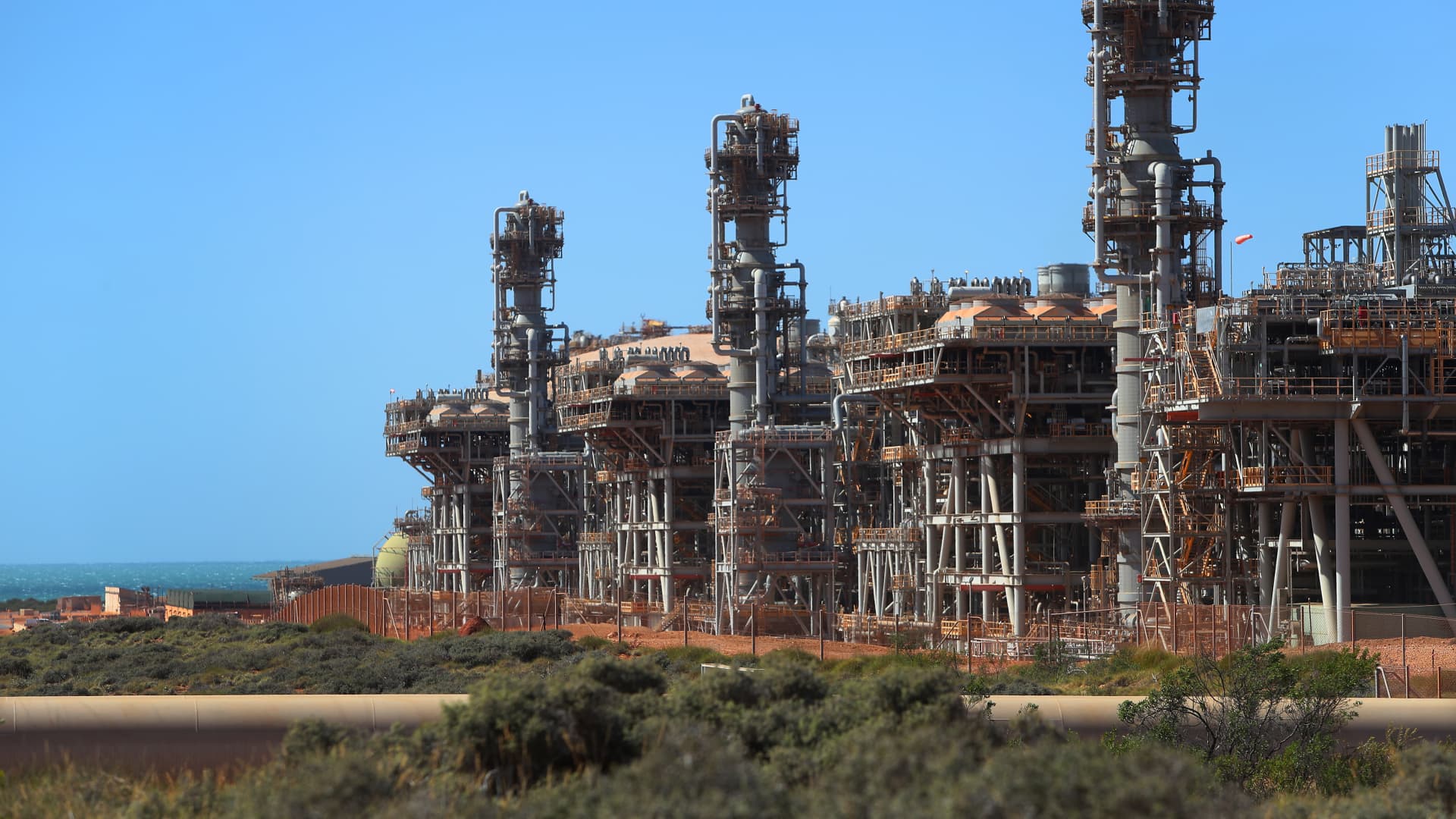
Oil and gas industry needs to let go of carbon capture as solution to climate change, iea says
Cnbc is ON AIR - VIEW NOW
Please note: this is Beta feature.
- Select a language for the TTS:
- UK English Female
- UK English Male
- US English Female
- US English Male
- Australian Female
- Australian Male
- Language selected: (auto detect) - EN
Play all audios:
The Gorgon liquefied natural gas (LNG) and carbon capture and storage (CCS) facility, operated by Chevron Corp., on Barrow Island, Australia, on Monday, July 24, 2023. Bloomberg | Bloomberg
| Getty Images The oil and gas industry needs to let go of the "illusion" that carbon capture technology is a solution to climate change and invest more in clean energy, the head
of the International Energy Agency said Thursday. "The industry needs to commit to genuinely helping the world meet its energy needs and climate goals – which means letting go of the
illusion that implausibly large amounts of carbon capture are the solution," IEA Executive Director Fatih Birol said in a statement ahead of the United Nations Climate Change Conference
in Dubai next week. The technology captures carbon dioxide from industrial operations before emissions enter the atmosphere and stores it underground. Oil and gas companies face a moment of
truth over their role in the clean energy transition, Birol wrote in an IEA report reviewing the industry's role in transitioning to an economy with net zero carbon emissions by 2050.
Just 1% of global investment in clean energy has come from oil and gas companies, according to Birol. The industry needs to face the "uncomfortable truth" that a successful clean
energy transition will require scaling back oil and gas operations, not expanding them, the IEA chief wrote. "So while all oil and gas producers needs to reduce emissions from their own
operations, including methane leaks and flaring, our call to action is much wider," Birol wrote. The industry would need to invest 50% of capital expenditures in clean energy projects
by 2030 to meet the goal of limiting climate change to 1.5 degrees Celsius, according to the IEA report. About 2.5% of the industry's capital spending went toward clean energy in 2022.
One of the major pitfalls in the energy transition is excessive reliance on carbon capture, according to the report. Carbon capture is essential for achieving net zero emissions in some
sectors, but it should not be used as a way to retain the status quo, according to the IEA. An "inconceivable" 32 billion tons of carbon would need to be captured for utilization
or storage by 2050 to limit climate change to 1.5 degrees Celsius under current projections for oil and gas consumption, according to the IEA. The necessary technology would require 26,000
terawatt hours of electricity to operate in 2050, more than total global demand in 2022, according to the IEA. It would also require $3.5 trillion in annual investment from today through
mid-century, which equivalent to the entire oil and gas industry's annual revenue in recent years, according to the report. U.S. oil major such as Exxon Mobil and Chevron are investing
billions in carbon capture technology and hydrogen, while European majors Shell and BP have focused more on renewables such as solar and wind. Exxon and Chevron are also doubling down on
fossil fuels through mega deals. Exxon is buying Pioneer Natural Resources for nearly $60 billion, while Chevron is purchasing Hess for $53 billion.